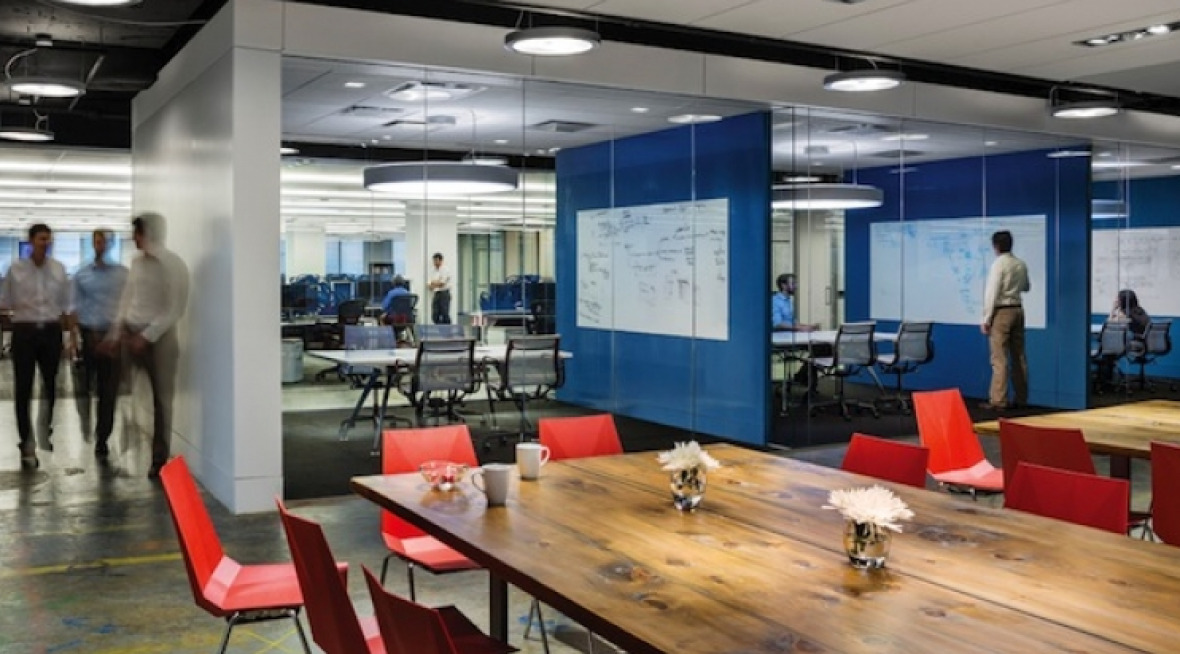We use cookies to maximize your online experience with us. By closing this window, you consent to our cookie policy. You can change your cookie settings in your browser any time. For more information, please see our Privacy Policy located on the footer of this site.
Workplace design trends: Make way for the Millennials

Economists are predicting modest but continued growth for the U.S. office construction market. FMI’s 2014 U.S. Markets Construction Overview anticipates that construction put in place in the sector will be fairly flat this year but could beat 2013 by up to 4%. Jones Lang LaSalle foresees a 6% increase in office project completions this year.
The New York-based project management consultancy Faithful+Gould points to decreasing vacancy rates as an indicator of growth, but says owners are likely to focus on upgrading existing buildings.
Whether created through renovation, adaptive reuse, or new construction, today’s workplaces are a notable departure from those of the past. Formerly, perimeter executive offices surrounded bland, productivity-draining expanses of repetitive workstations. Poor acoustics, limited flexibility and views, and a lack of meeting space marked these walled-in, open-plan “cubiclevilles.”
Now, the walls are coming down. Driven by changing work styles, mobile technology, and the growing presence of Millennials—people born between the early 1980s and 2000—today’s workplaces are changing, mostly for the better. Perimeter offices are disappearing, floor plans are opening up, and trendy breakout areas and cafés are replacing the rigid, closed layouts of the past, says Barry Fries, founder and CEO of contractor B.R. Fries & Associates (www.brfries.com). “More than ever, we see young companies owned or dominated by Millennials gravitating toward historic downtown buildings, where they’re installing sustainable, laid-back interiors with adaptable furniture systems and a surprisingly high finish quality,” he says.
With 72% of corporate real estate executives saddled with the responsibility of productivity improvements, according to Jones Lang LaSalle, decision makers are putting the emphasis on modifying their facilities to support creativity, focus, and teamwork.
HERE COME THE MILLENNIALS
Baby Boomers made up more than half of the U.S. workforce in 2010, according to JLL; by 2020, they will be outnumbered by Millennials. A study by Forbes projects that three out of four workers will be Millennials by 2025. This ambitious, tech-savvy, creative cohort has notably different working styles and preferences than other generations; for instance, Millennials may be more productive sitting in cafés or lounge areas than in traditional workstations. Their ease with mobile technology enables many of them to work anytime, anywhere.
In some high-tech companies run by Millennials, nonconventional workspaces are the thing. “Millennials are collaborators, and they don’t like to isolate themselves,” says Marlyn Zucosky, IIDA, Partner and Director of Interior Design with JZA+D (www.joshuazinder.com). “Providing more open places for informal meetings is a successful strategy. And Millennials in general have a lower demand for privacy than Baby Boomers.
To read entire article click here!
